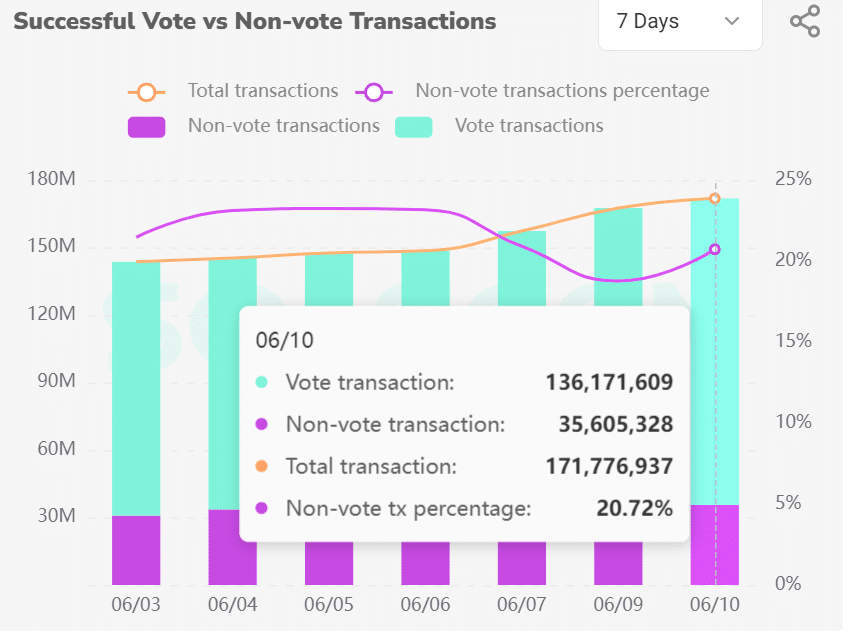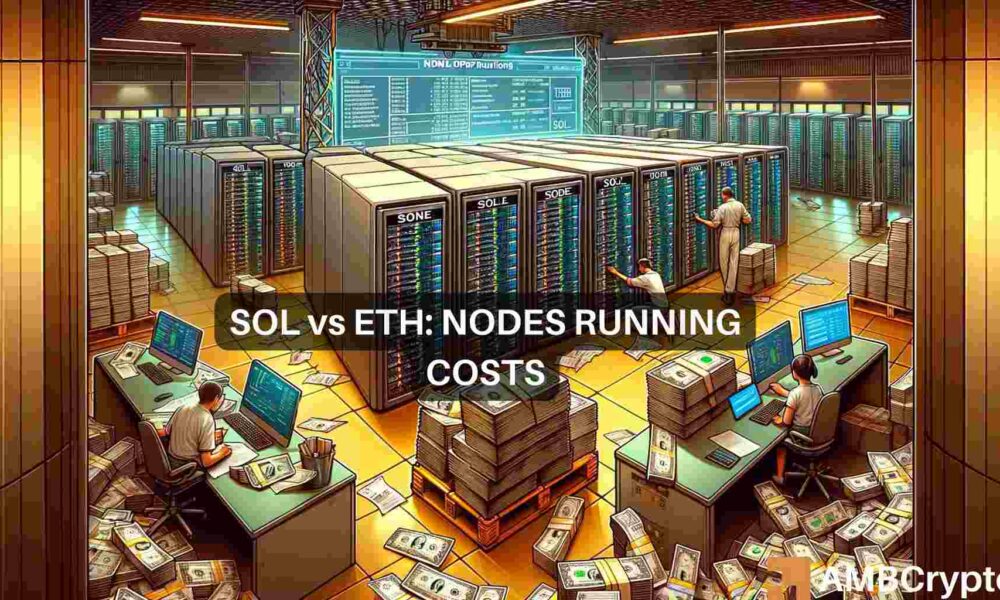- Solana’s founder proposed a mechanism to lower entry barriers to node operations.
- The executive branch considered ways to handle voting costs to address the problem.
Solana [SOL] And Ethereum [ETH] leaders have been debating various issues in space for a while.
Recently, the Solana Foundation’s crackdown on validators using Maximum Extractable Value (MEV) sandwich attacks attracted widespread attention.
The Foundation has withdrawn financial support from some validators to reduce attacks.
It turned out that running a Solana validator node is very difficult durationabout $65,000 per year, prompting the Solana Foundation to provide financial support in some cases.
On the contrary, an Ethereum validator costs 32 ETH as a one-time payment, and excludes hardware and other resources.
Why Solana nodes are 10x more expensive
Solana founder Anatoly Yakovenko clarified the cost difference over ‘Ethereum’s better investment’ in its consensus system.
‘The economic barrier for honest nodes to participate in consensus on Solana is 10x higher than ethereum atm. Largely due to Ethereum’s investment in BLS aggregation for consensus messaging.”
The BLS refers to Boneh-Lynn-Shacham, an efficient signature scheme used by Ethereum. In particular, the schema may contain several independently verified messages by validators.
This allows different messages to be effectively merged, reducing overall costs.
As Yakovenko noted, Solana’s current mechanism does not match Ethereum’s technology. However, the founder added that Solana would eventually implement such a system.
“Maybe that’s something that Solana will eventually implement, maybe it will be voting committees, maybe nothing. As hardware improves, the lower limit for sending a message to the entire cluster will decrease, which will reduce the cost per vote and also reduce the economic barrier.”
However, one user noted that most of the costs were driven up by voting fees and asked how Solana would solve that. In his answer Yakovenko said said,
‘Voting subcommittees would allow for voting fees to be reduced and boxes rotated in/out of the committee, which would reduce voting burdens and result in lower voting costs’
In the past seven days, 80% of total Solana transactions were related to votingunderscoring their dominance in the block trades space.


Source: Solscan
Because fees are charged for voting transactions, just like for everything else, the validators bear the costs. Their higher dominance suggests that voting costs are the largest contributor and may be a barrier to market entry.
It remains to be seen whether Solana will implement the solution as proposed by the founder.
Meanwhile, SOL lost 6% as crypto investors de-risked ahead of the FOMC (Federal Open Meeting Committee) meeting.
SOL hit a low of $145 on June 11, the level last reached in mid-May as the market crisis expanded liquidations in the markets.

